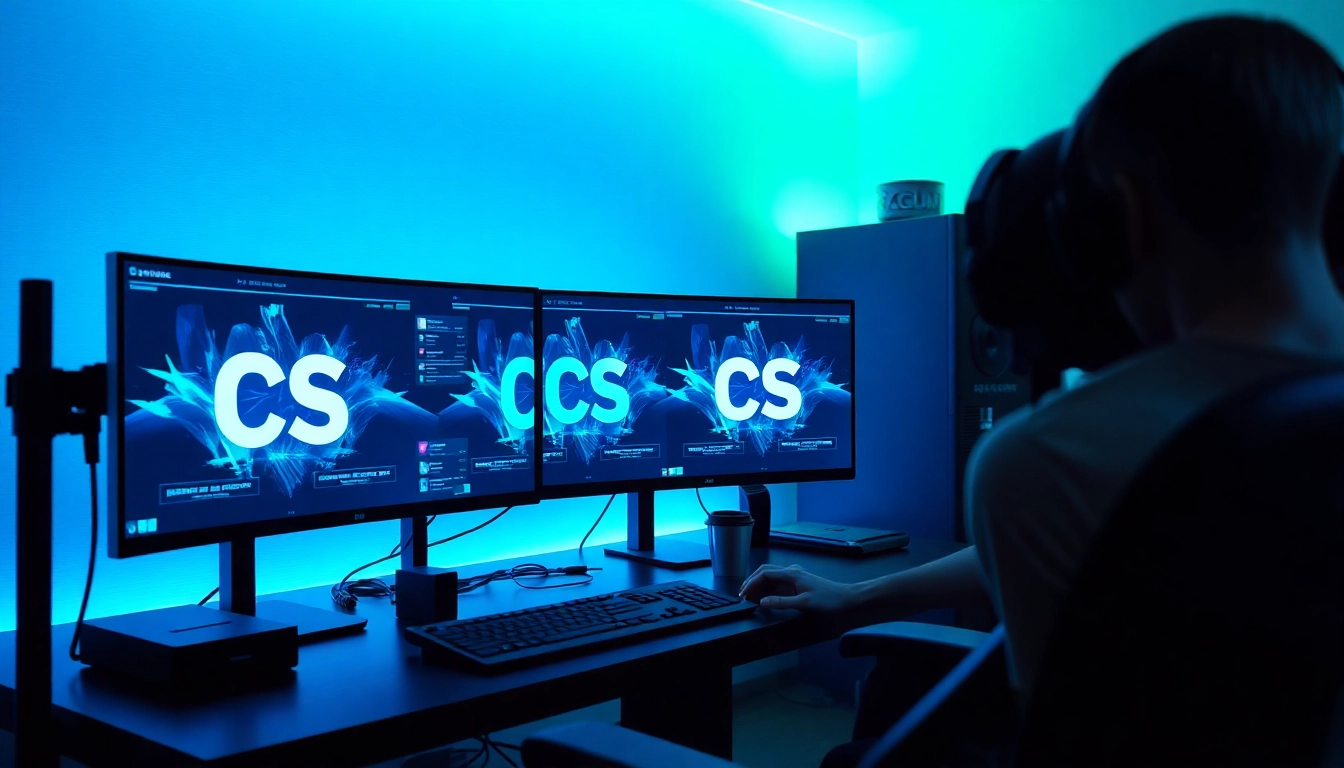Introduction to CS Teste: Understanding Its Purpose and Benefits
In the rapidly evolving landscape of online gaming and network testing, ensuring optimal server performance and minimizing latency are critical for both gamers and developers. One of the pivotal tools in this domain is cs teste, a comprehensive testing solution designed to analyze, diagnose, and enhance the quality of gaming and streaming experiences. Whether you are a casual gamer aiming for smoother gameplay or a developer seeking to optimize server infrastructure, understanding the purpose and benefits of CS Teste is essential for achieving excellence in digital performance.
This article delves into the intricacies of CS Teste, exploring its setup, best practices for effective testing, interpretation of data, and future trends shaping its evolution. By adopting a structured approach to testing, users can significantly improve their connection stability, reduce lag, and ensure a seamless experience in counter-strike and other multiplayer environments.
Setting Up Your CS Teste Environment for Success
Required tools and software for effective testing
Establishing a reliable testing environment begins with selecting the right tools and software. Essential components include:
- Testing Platform or Server: Choose a dedicated server or cloud-based environment that can simulate real-world conditions.
- Network Monitoring Tools: Applications like ping testers, traceroutes, and bandwidth analyzers help in assessing network stability and throughput.
- Game-specific Testing Software: Utilities tailored for specific games like Counter-Strike, including custom ping tools and server plugins.
- Hardware Infrastructure: Ensure robust hardware, including high-performance routers and network interfaces, to avoid bottlenecks.
Step-by-step guide to configuring your tests
Configuring your CS Teste environment effectively involves a systematic approach:
- Identify Test Targets: Select the server locations and game modes you want to evaluate.
- Set Baseline Metrics: Record initial performance indicators such as ping, jitter, and packet loss under typical conditions.
- Configure Test Parameters: Define parameters like test duration, frequency, and specific network conditions to simulate.
- Initiate Tests: Run multiple sessions to capture variability and ensure comprehensive data collection.
- Document Results: Store data systematically for comparison and analysis.
Common setup challenges and troubleshooting tips
Common issues during setup include network congestion, misconfigured firewalls, or hardware limitations. To troubleshoot efficiently:
- Use Network Diagnostic Tools: Run ping and traceroute commands to identify latency spikes or routing issues.
- Optimize Network Settings: Prioritize gaming traffic through Quality of Service (QoS) configurations.
- Update Firmware and Drivers: Ensure all hardware components are current to prevent incompatibility issues.
- Perform Test Runs: Conduct short preliminary tests to identify and rectify issues before full-scale testing.
Best Practices for Conducting Reliable CS Teste Sessions
Designing meaningful test scenarios and parameters
Effective testing hinges on well-designed scenarios that mirror actual gameplay conditions. Consider variables such as:
- Different times of day to account for network traffic fluctuations
- Varied server locations to assess geographic latency differences
- Multiple device setups to evaluate hardware impact
Incorporate scenarios like high traffic loads or simulated packet loss to gauge server robustness under stress.
Measuring key performance metrics effectively
Critical metrics to monitor during CS Teste sessions include:
- Ping: The round-trip time between client and server, with lower latency indicating better performance.
- Jitter: Variability in latency, which impacts gameplay consistency.
- Packet Loss: Data packets lost during transmission, leading to lag and disconnections.
- Throughput: The amount of data transferred within a given time frame, affecting game responsiveness.
Use real-time dashboards and logging tools to visualize these metrics as they evolve during testing.
Documenting and analyzing test results for improvements
Meticulous documentation involves recording detailed session data, environmental conditions, and anomalies. Analytical steps include:
- Comparing performance across different scenarios to identify patterns
- Correlating network conditions with gameplay issues
- Utilizing statistical tools to assess variability and reliability
Insights derived can then guide hardware upgrades, network optimizations, or server configurations.
Interpreting Your CS Teste Data for Optimal Outcomes
Understanding latency, ping, and stability indicators
Key indicators such as latency and ping provide direct insights into network health. High ping values (>100ms) can cause noticeable lag, while jitter above 30ms indicates instability. Stability metrics involve monitoring connection consistency over time, with frequent fluctuations signaling potential issues.
Identifying bottlenecks and areas for enhancement
Data analysis often reveals bottlenecks such as:
- Overloaded servers or insufficient bandwidth
- Suboptimal routing paths increasing latency
- Hardware limitations on client devices or network devices
Proactively addressing these areas through server upgrades, route optimization, or hardware replacement can substantially improve user experience.
Applying insights to enhance gameplay and server reliability
Translated data insights enable targeted improvements:
- Implementing server load balancing strategies
- Optimizing network configurations for minimal latency
- Alerting system administrators to anomalies for immediate response
- Scheduling maintenance during low-traffic periods to minimize disruption
Regular testing and continuous monitoring foster a proactive approach to maintaining optimal server health and user satisfaction.
Advanced Strategies and Future Trends in CS Teste
Integrating automation and real-time monitoring tools
Automation revolutionizes testing efficiency by enabling scheduled, repeatable tests with minimal manual intervention. Utilizing real-time monitoring dashboards allows teams to detect issues instantly, facilitating swift resolution. Tools integrating artificial intelligence can predict potential problems before they impact gameplay, based on trend analysis.
Predictive analytics for proactive server management
By leveraging historical data and machine learning algorithms, organizations can forecast performance bottlenecks and preemptively adjust resources. This proactive approach minimizes downtime and ensures stable gameplay even during peak hours.
Emerging innovations shaping the future of CS testing
Future developments include ultra-low latency testing through 5G networks, the integration of blockchain for secure data transmission, and AI-driven customization of testing scenarios tailored to specific user behaviors. These innovations aim to deliver an unmatched gaming experience, combining technological advances with strategic insights.



